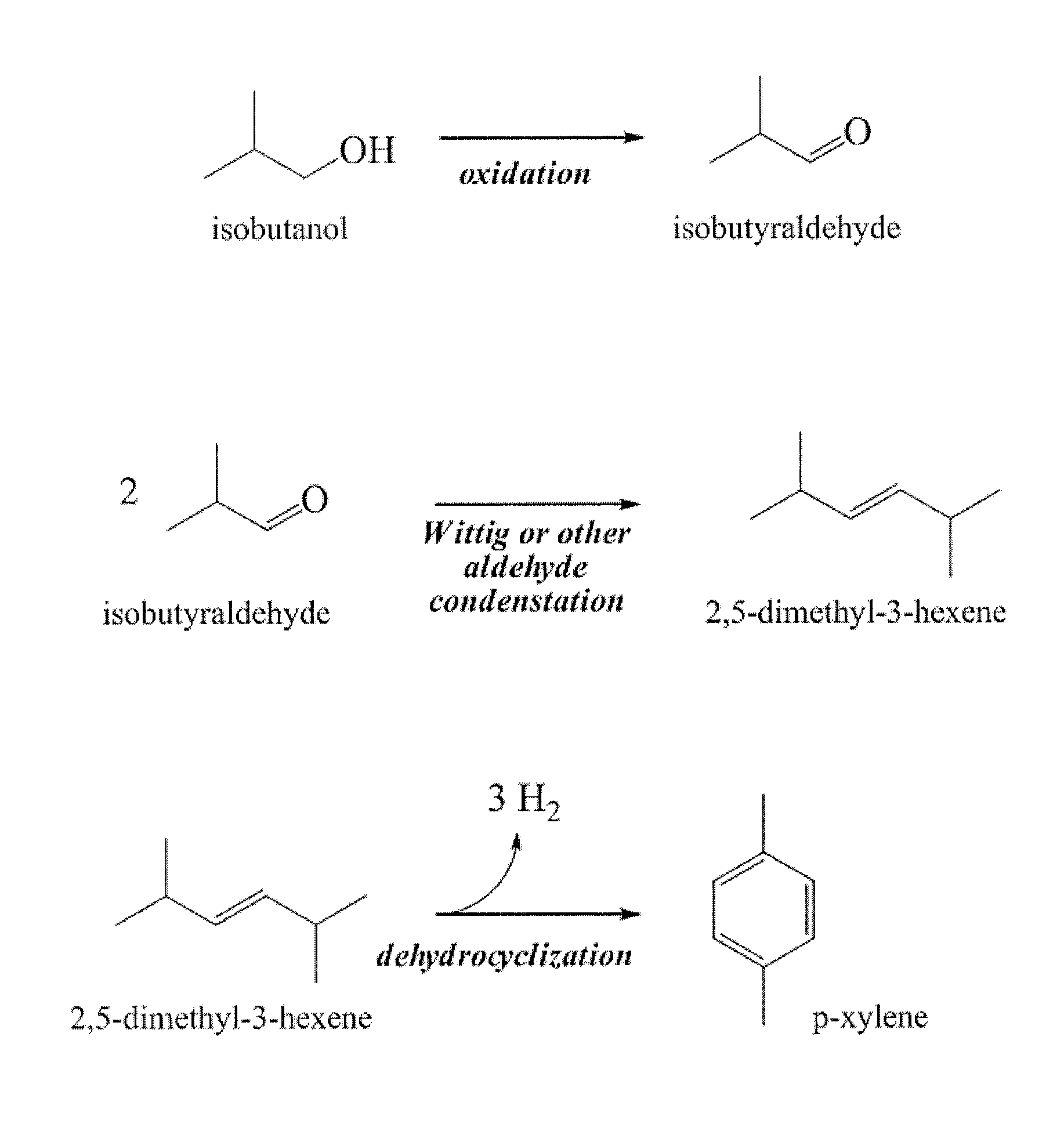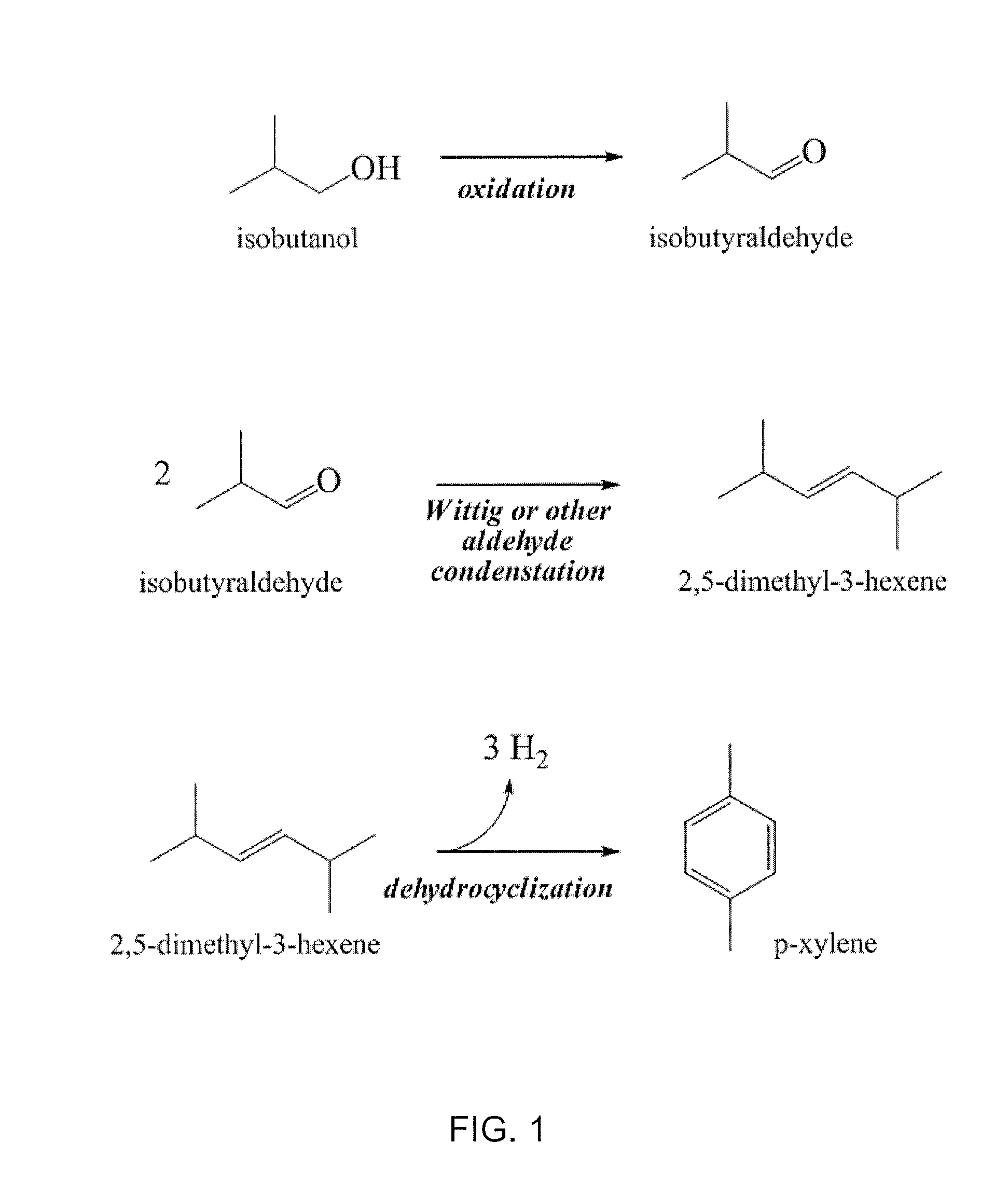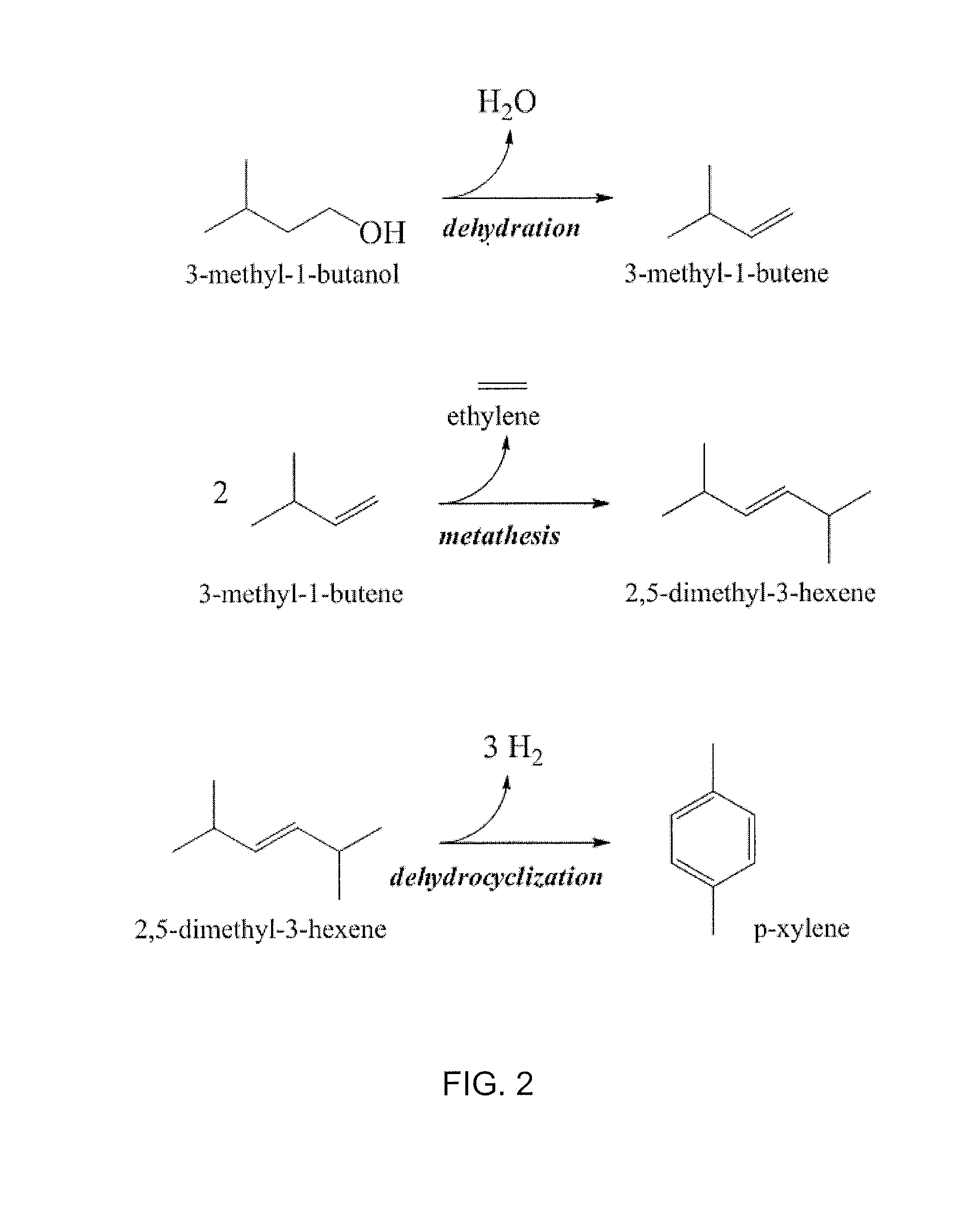Renewable Xylenes Produced from Bological C4 and C5 Molecules
a technology of xylene and c4 molecules, which is applied in the field of renewable xylenes produced from bological c4 and c5 molecules, can solve the problems of limiting the yield of xylene (, xylene) to less than 50%, and is technically challenging to implement commercially, and achieves the effect of high yield
- Summary
- Abstract
- Description
- Claims
- Application Information
AI Technical Summary
Benefits of technology
Problems solved by technology
Method used
Image
Examples
example 1
Xylenes Via Oxidation of C4 Alcohols to C4 Aldehydes.
[0059]In general, a renewable C4 alcohol (e.g., isobutanol) may be oxidized to produce a corresponding C4 aldehyde (e.g., isobutyraldehyde). Selective oxidation of alcohols to aldehydes may be affected by employing transition metal oxidants (Cr, Fe or Mn based reagents, etc), by employing sulfur-based oxidants (e.g., Swern-type reagents), or by employing hypervalent iodine reagents (e.g., Dess-Martin periodinane, etc.). Subsequent homocoupling of a resultant aldehyde by one or more processes such as aldol-type coupling (and optionally subsequent dehydration and / or dehydrogenation) may afford the desired C8 olefin (e.g., 2,5,-dimethyl-3-hexene) as exemplified in FIG. 1.
[0060]In addition or alternatively, other suitable olefin-generating chemistry (e.g., Wittig-type coupling) can yield a desired product C8 olefin. As shown in FIG. 1, the Wittig reaction of isobutyraldehyde with a suitable coupling partner such as an isobutyl halide ...
example 2
Xylenes Via Dehydration of C5 Alcohols to C5 Alkenes.
[0070]As shown in FIG. 2, in general, a C5 alcohol (e.g. 3-methyl-1-butanol) may be dehydrated to form a corresponding C5 alkene (e.g. 3-methyl-1-butene). Dehydration may be effected by techniques as described in, e.g., U.S. patent application Ser. No. 12 / 899,285. The product resulting 3-methyl-1-butene may then be subsequently subject to homometathesis with a metathesis catalyst under conditions that favor the removal of ethylene to form 2,5-dimethyl-3-hexene. Any suitable catalyst for promoting olefin metathesis may be employed (e.g., a Ru-based catalyst or other any suitable transition metal catalyst known in the art). As shown in FIG. 2, homometathesis of 3-methyl-1-butene affords 2,5-dimethyl-3-hexene and ethylene, which may be removed from the reaction space during the metathesis reaction. The 2,5-dimethyl-3-hexene product may optionally be separated or purified, and then selectively converted to p-xylene via dehydrocyclizat...
example 3
Dehydration of C5 Alcohols to Form a Mixture of Isomeric C5 Alkenes.
[0071]As shown in FIG. 3, a mixture of isomeric butenes may be formed via dehydration of a corresponding alcohol (e.g., 3-methyl-1-butanol) as previously described herein. The product butenes (e.g., 3-methyl-2-butene and 3-methyl-1-butene) may be treated with an isomerization catalyst to provide a desired butene isomer, or to enrich a mixture of butenes in a desired isomer. Suitable isomerization catalysts are any catalyst known in the art for promoting isomerization of olefins, including but not limited to acidic catalysts, and metal catalysts such as MgO. A product butene (or mixture of butenes) may then be subject to metathesis conditions (e.g., employing an olefin metathesis catalyst as previously described herein), affording ethylene and 2,5-dimethyl-3-hexene (or isomers thereof). As shown in FIG. 3, product 2,5-dimethyl-3-hexene is formed via homometathesis of 3-methyl-1-butene. The product 2,5-dimethyl-3-hexe...
PUM
| Property | Measurement | Unit |
|---|---|---|
| temperatures | aaaaa | aaaaa |
| temperatures | aaaaa | aaaaa |
| temperatures | aaaaa | aaaaa |
Abstract
Description
Claims
Application Information
 Login to View More
Login to View More - R&D
- Intellectual Property
- Life Sciences
- Materials
- Tech Scout
- Unparalleled Data Quality
- Higher Quality Content
- 60% Fewer Hallucinations
Browse by: Latest US Patents, China's latest patents, Technical Efficacy Thesaurus, Application Domain, Technology Topic, Popular Technical Reports.
© 2025 PatSnap. All rights reserved.Legal|Privacy policy|Modern Slavery Act Transparency Statement|Sitemap|About US| Contact US: help@patsnap.com



